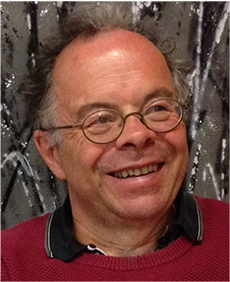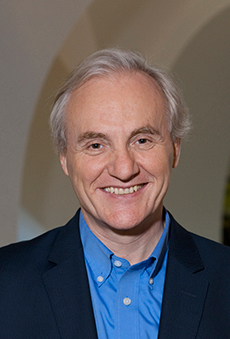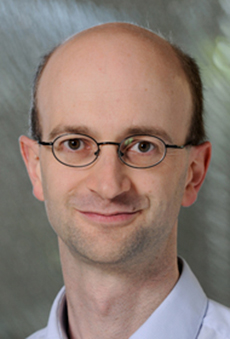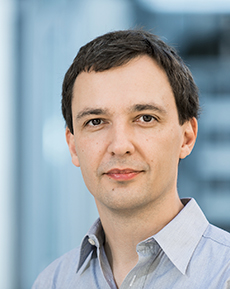Navigation auf uzh.ch
Navigation auf uzh.ch

The six UZH researchers are among the most influential in their field. They’re part of a prestigious group known as the Highly Cited Researchers that includes around 3,000 names from around the world. The rankings are based on the Thomson Reuters Web of Science platform, which covers scientific publications published between 2003 and 2013 and their citation in 22 specialist fields of the natural sciences, economics, clinical medicine, and the social sciences. “We shouldn’t be attaching too much importance to these rankings,” says biostatistician Torsten Hothorn, himself one of the Highly Cited Researchers. “The process favors publications on methods used by many colleagues, as well as large research consortia. Smaller fields and cross-disciplinary themes are also at a relative advantage.”

Plant geneticist Beat Keller at the Department of Plant and Microbial Biology attributes his good ranking to genome analysis on the one hand, and work with resistance genes on the other. In 2009, Keller joined forces with fellow researchers in the United States and Germany to publish an analysis of the genome of Sorghum bicolor, a type of sorghum or millet originating in Africa. Their data allowed a better understanding of the genetic attributes, and are facilitating the development of strains adapted to local conditions. In the same year, Keller’s group managed to identify and isolate Lr34, a resistance gene in wheat that protects the plant against fungal pathogens. The functions of Lr34 are keeping Keller’s group busy, producing a steady stream of highly acclaimed work. Keller is delighted that “even though the department is small by international standards, we can make an impact all over the world with our work.”

Plant physiologist Enrico Martinoia is the second group head at the Department of Plant and Microbial Biology to have made it onto the Thomson Reuters list. His international reputation rests on three research topics: plant hormones, heavy metal detoxification, and intracellular transport processes. One publication that led to many citations was a paper on phytohormones called strigolactones that appeared in 2012. His research on toxic heavy metals such as cadmium and lead also got a great response. Many plants are able to bind these environmental pollutants chemically, serving as model organisms that allow researchers to look into ways of cleaning up contaminated soils using plants. Here too, Martinoia is interested in the biochemical transport processes – also an interest in his third area of focus, vacuolar transporters. The vacuole, part of plant cells, serves as a temporary store for metabolites. “One reason for the widespread impact of our work is its cross-disciplinary nature,” explains Martinoia. Another reason is the Plant Science Center, run jointly with the ETH and the University of Basel.
For many years, behavioral economist Ernst Fehr at the Department of Economics and his colleagues have been publishing highly respected work on the social and biological principles that prompt or hinder cooperative behavior among human beings.

His two most cited works, “A theory of fairness, competition and cooperation,” and “Altruistic punishments in humans,” are seen as pioneering in terms of understanding altruistic motives and their social and economic implications. While these fall outside the timeframe covered by the latest rankings, more recent work by Ernst Fehr and his team has been no less important, and scores consistently high citation rates. An example is a 2005 paper on oxytocin showing that the hormone increases trust in humans and plays a key role in economic exchange. “I’ve always been interested in fundamental issues that haven’t yet been resolved,” explains Ernst Fehr. In his search for answers he’s never been afraid to look into disciplines outside his own field.
Systems biologist Christian von Mering at the Institute of Molecular Life Sciences was involved in setting up a database called String that has brought him a lot of attention and citations. The database, which decodes interactions between the tens of thousands of protein molecules in a cell, has become an important tool for genome and proteome researchers. Thanks to years spent setting up the platform, it now hosts data from more than 9.6 million proteins from 2,031 organisms.


Ecologist Jordi Bascompte at the Department of Evolutionary Biology and Environmental Studies analyzes ecological networks with the help of mathematical models and simulations. The goal is to understand natural systems and their robustness more fully. This new approach has yielded surprising results, which Bascompte and his colleagues published in a highly cited paper in 2009: all sorts of different networks, from financial markets through organic diseases to the earth’s ecosystems, display similar “tipping points,” critical thresholds which when crossed cause the system to tip. Bascompte and his colleagues were also able to show that there are similar warning signals in these critical phases before the system collapses. These signatures emerged from the mathematical analysis of tipping points. “We take a comprehensive approach to understanding complex systems more fully,” explains Bascompte, whose work has also provided the basis for an ecofilm.

Biostatistician Torsten Hothorn at the Epidemiology, Biostatistics and Prevention Institute develops methods and open source software for biological and biomedical analysis. His programming work is part of the R and Bioconductor projects, open platforms providing statistical tools that are available to fellow researchers free of charge. Based on the popular, freely available programming language R, the projects are a prime example of open science. The fact that Hothorn has been involved in this international cooperation for more than fifteen years has brought him many citations. For this reason he’s keen to play down his ranking as an influential and highly cited researcher and put it in perspective. “I do methodological development, which often gets cited,” explains the biostatistician.